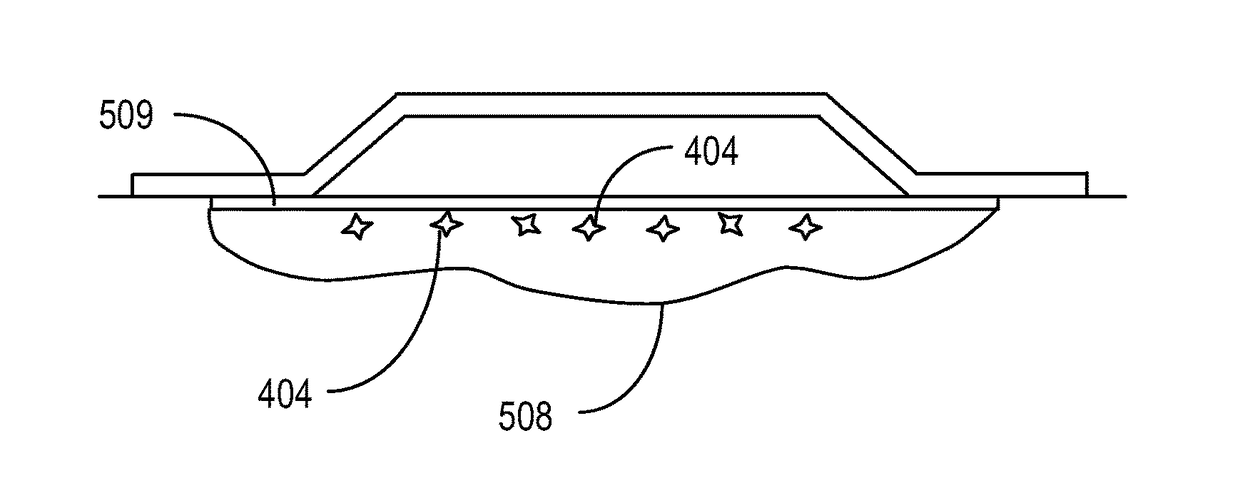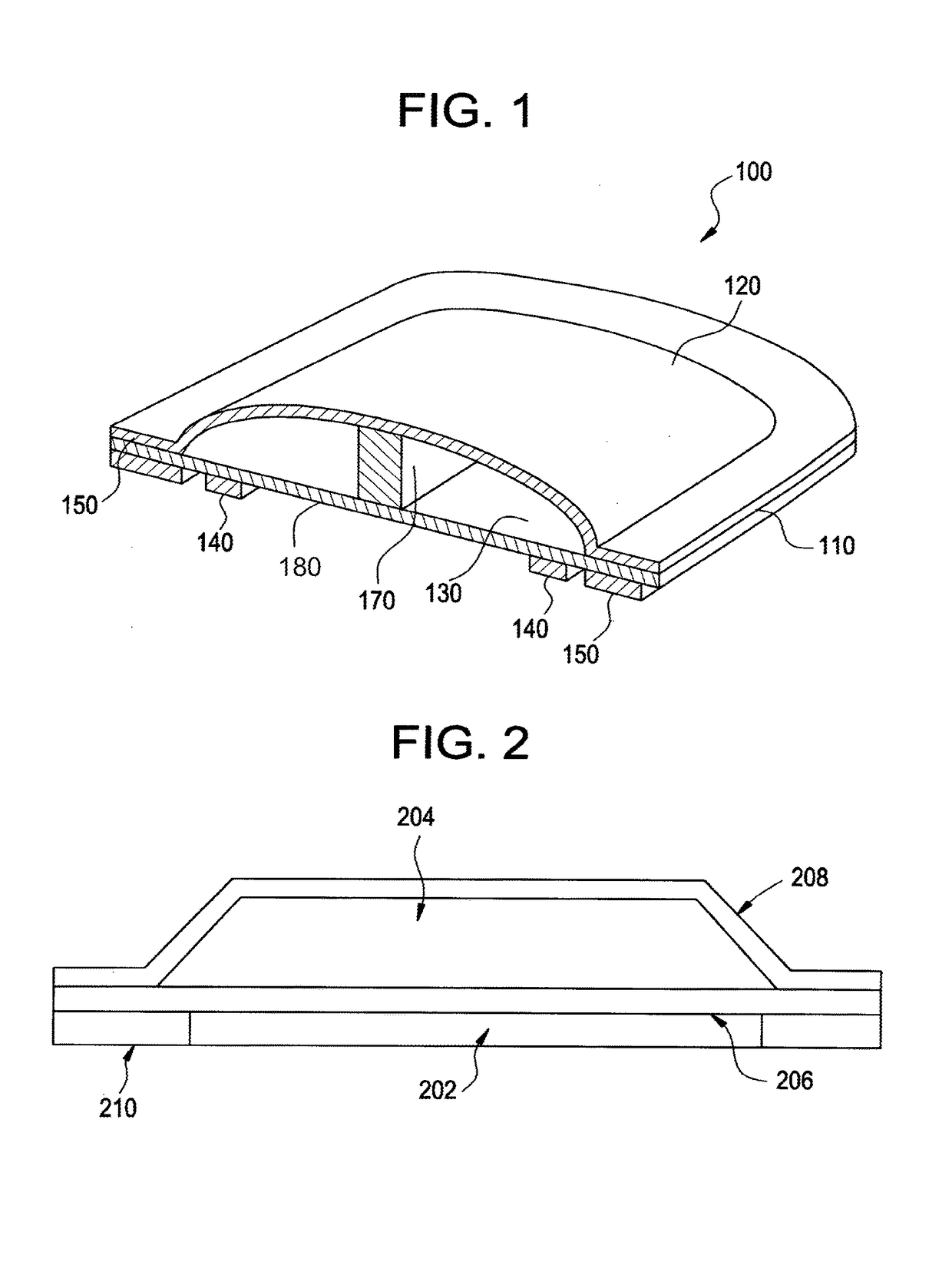Systems and methods for enhancing gas and vapor transfer for tissue treatment devices
a tissue treatment and gas and vapor transfer technology, applied in the field of tissue treatment devices, can solve the problems of skin or wounds becoming a source of excess moisture and moisture vapor, limiting access, and affecting the treatment effect, so as to maximize the moisture vapor transmission rate, maximize the mvtr in and around the target, and maximize the mvtr
- Summary
- Abstract
- Description
- Claims
- Application Information
AI Technical Summary
Benefits of technology
Problems solved by technology
Method used
Image
Examples
Embodiment Construction
[0010]Penetration Enhancement of Gases
[0011]Some embodiments of the invention present methods and systems for tissue treatment, especially wound treatment, that include penetrating elements to penetrate the surface of the wound. Such penetrating elements may be included, for example, using a tissue dressing, pre-packaged (preferably) with one or more gases for treating a wound (e.g., oxygen, nitric oxide), examples of which are set forth in Applicant's U.S. Pat. No. 7,014,630 and co-pending U.S. utility patent application Ser. No. 11 / 356,929, filed Feb. 16, 2006 (the '929 application), both disclosures of which are herein incorporated by reference. Alternatively, such penetrating elements may be part of a separate structure that can be used in conjunction with a tissue dressing or other supply of one or more therapeutic gases.
[0012]Accordingly, by adding penetrating elements to some of the embodiments disclosed in the '929 application and the '630 patent, one can produce a tissue / wo...
PUM
 Login to View More
Login to View More Abstract
Description
Claims
Application Information
 Login to View More
Login to View More - R&D
- Intellectual Property
- Life Sciences
- Materials
- Tech Scout
- Unparalleled Data Quality
- Higher Quality Content
- 60% Fewer Hallucinations
Browse by: Latest US Patents, China's latest patents, Technical Efficacy Thesaurus, Application Domain, Technology Topic, Popular Technical Reports.
© 2025 PatSnap. All rights reserved.Legal|Privacy policy|Modern Slavery Act Transparency Statement|Sitemap|About US| Contact US: help@patsnap.com



